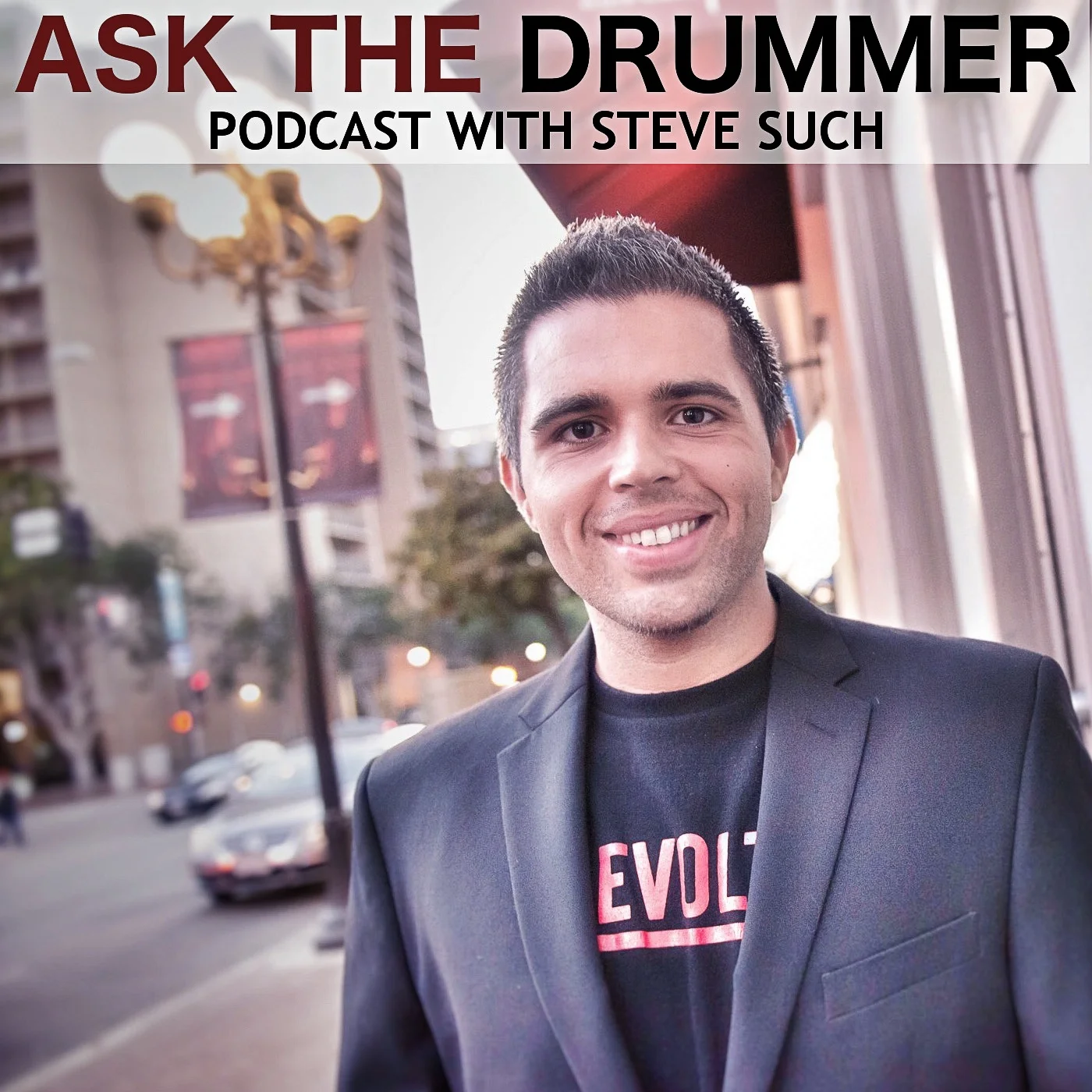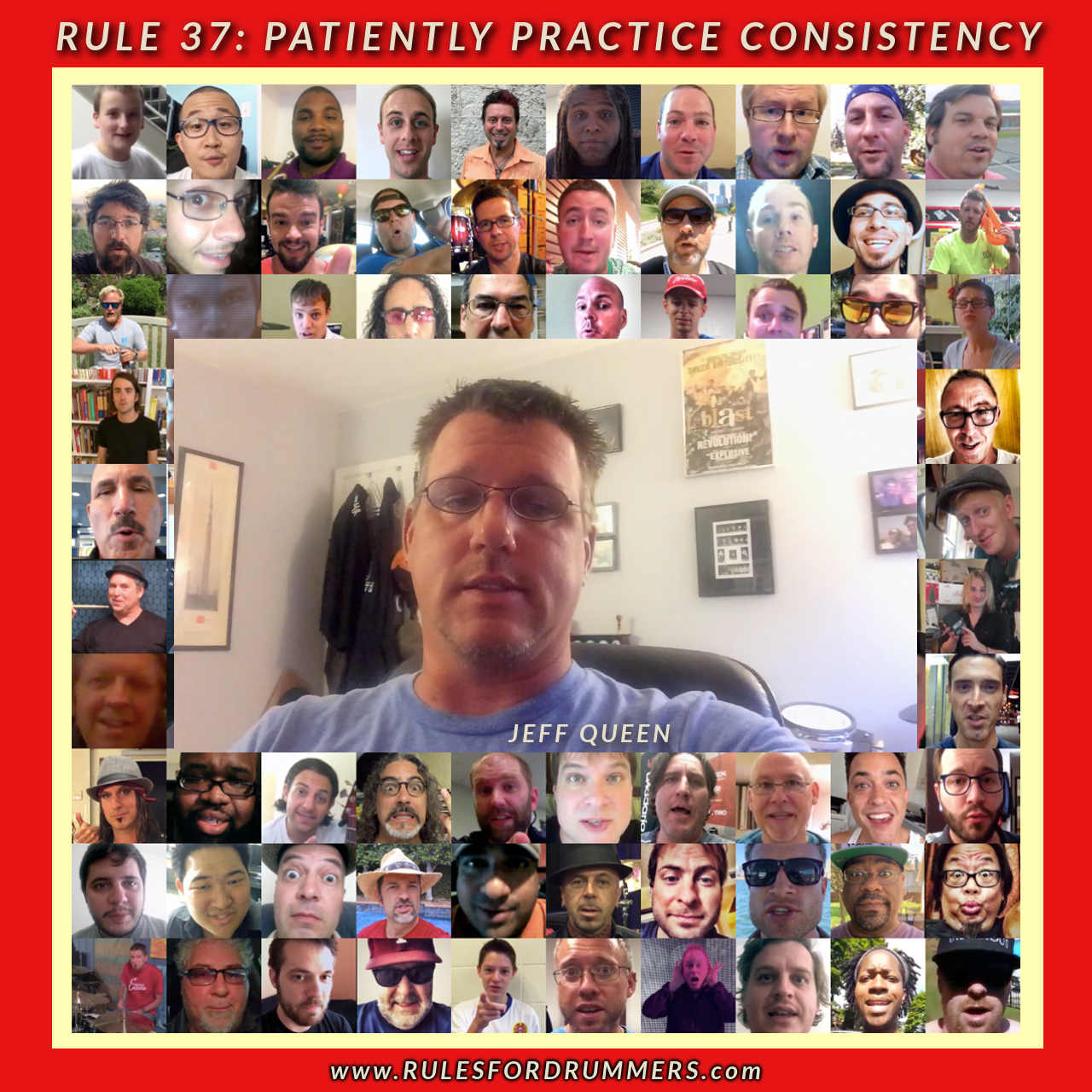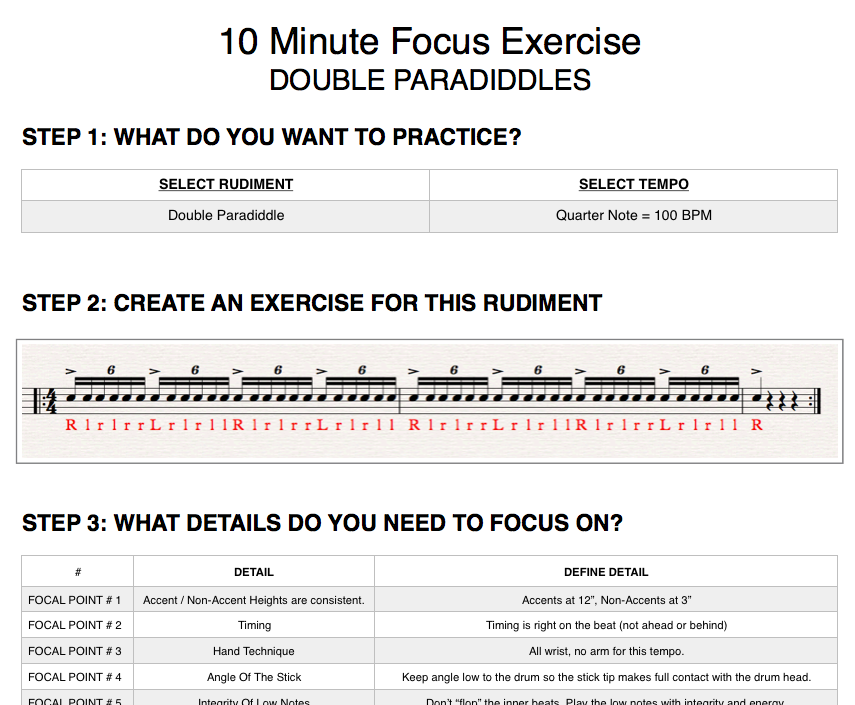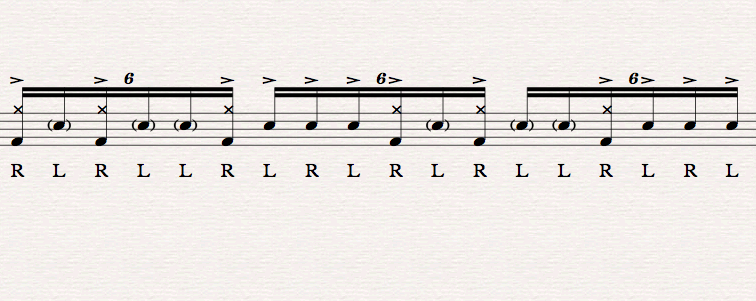SECTION 2: AS YOUR'E SIGHT-READING THE CHART
Okay, you’re ready to begin playing the chart. Take a deep breath, relax, and play with confidence!
STEP 1 - KNOW YOUR PLACE
Always know where you are in the chart. The best way to do this is to keep your eyes glued to the page as you play the chart. As you get more comfortable reading, you’ll be able to look around more, but when you're first starting out, the page is all you should be looking at.
Lack of focus is the number one reason why drummers get lost in the chart. When you’re sight-reading, don’t get distracted by what you hear... just follow and trust the chart!
STEP 2 - KNOW HOW TO INTERPRET THE CHART
Interpretation is how you take what you SEE on the page and turn it into MUSIC. The best sight-readers are the ones who know how to musically interpret what they see. Developing your interpretation of charts is one of the most effective ways to improve not just your chart-reading abilities, but your overall musicianship as well!
I could go into great detail on interpretation, but it’s a bit beyond the scope of this article.
Instead, I’d HIGHLY recommend picking up these 2 books:
Studio & Big Band Drumming by Steve Houghton
Inside The Big Band Drum Chart by Steve Fidyk
These books are incredible; they have detailed instructions on how to musically interpret drum charts, as well as excellent play-along tracks.
I’ll just give you one important “nugget” here: Anytime you see “longer ensemble notes” written, tend to choose drum sounds that are “longer" (cymbals, etc.). For “shorter ensemble hits” written out, choose shorter drum sounds, such as your snare drum. Rhythmic accuracy is only part of the equation, the bigger goal is to compliment what the other members of your band are doing in a musical manner in your kit.
Again, I strongly recommend that you refer to the books mentioned above for much more detail.
STEP 3 - ALWAYS LOOK AHEAD
Once you become more comfortable chart-reading, you should start focusing on looking further ahead in the music as you play. Many beginning sight-readers will focus their eye on each beat or each measure, but you should instead be looking at longer phrases. This way, you can become PROACTIVE rather than REACTIVE.
When you look ahead, it gives you more time to prepare for what’s coming next, so you can make it easier on yourself to choose more musical decisions!
It’s sort of like driving. If you only look 2 feet in front of you, driving would be very stressful. Driving becomes much easier if you look further ahead… it allows you to plan for what’s coming next.
STEP 4) IF YOU MAKE A MISTAKE, DON’T STOP
If you make a mistake, whatever you do: DON’T STOP!!
As long as you’re playing solid time and following the form, you’ll be able to recover from any reading mistakes that are made, and your band mates will thank you. If the drummer stops playing, the whole song will crash and burn!
Being able to recover quickly is one of the most important aspects of being a great sight-reader.
























